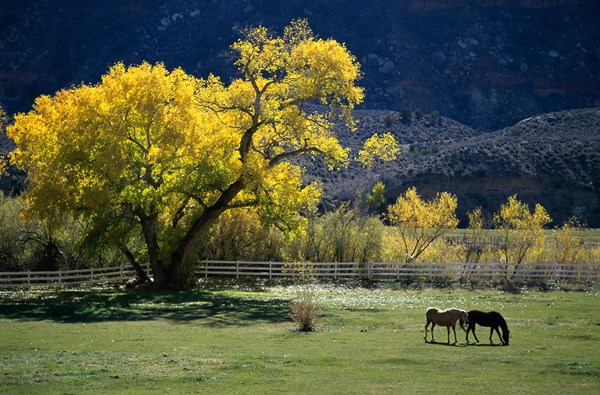 Credit: Thinkstock Fall is an ideal time to focus management on pastures.
Credit: Thinkstock Fall is an ideal time to focus management on pastures.Fall provides an ideal time of year to improve horse pastures. Fall is an ideal time of year to seed or over?seed pastures and rid pastures of perennial weeds (including thistles). Fall is the best time to seed or re?seed pasture due to the usually adequate moisture, less weed competition and cooler weather conditions. This time of year is also best for perennial weed control since perennial plants are storing carbohydrates in their roots allowing the herbicide to be translocated into the root for effective control.
Make sure to check fences and pay special attention to posts. Fix broken posts before they are frozen into the ground. Finally, make sure the pasture grasses have three to four inches of re?growth going into winter. This will help with winter survival and a quicker spring growth. Keeping horses over winter on pastures causes damage to plants and offers the horse little nutrition. Keeping the horses in a sacrifice paddock (or dry lot) with access to hay, water and shelter is recommended.
However, horse owners should use caution when grazing during the first killing frost of the fall. Frost damaged pasture forages (grasses and legumes) can have higher concentrations of nonstructural carbohydrates following the first killing frost of the season. This can lead to an increase in the potential for laminitis and colic in obese horses or horses diagnosed with laminitis and/or equine metabolic syndrome. To reduce the chance of adverse health effects, it is recommended that horse owners wait up to a week before turning all horses, including healthy horses, back onto a pasture after a killing frost.
For more information from the University of Minnesota Horse Extension visit their website.



